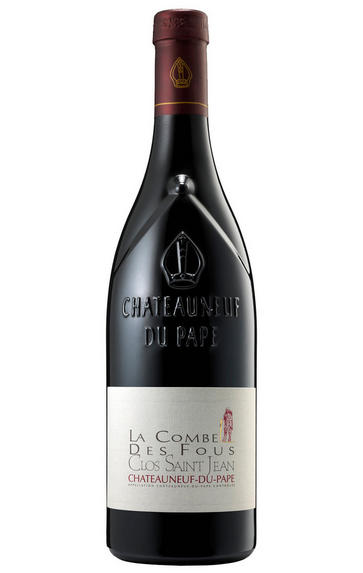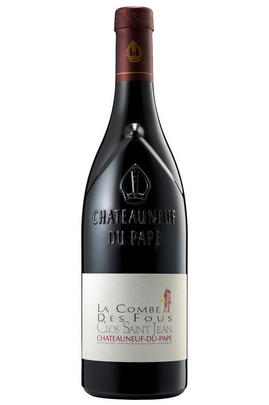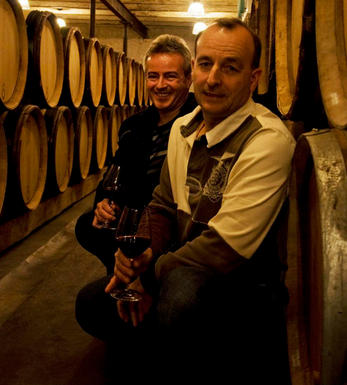
2016 Châteauneuf-du-Pape, La Combe des Fous, Clos Saint Jean, Rhône

Critics reviews
Joe Czerwinski - 31/08/2018
About this WINE

Clos Saint Jean
The brothers Pacsal and Vincent Maurel, with a little help from the larger-than-life and near-ubiquitous consultant Philippe Cambie, continue to work wonders with this famous old Châteauneuf du Pape Domaine Clos St. Jean.
The wine property is similar in size to Beaucastel and also has some spectacular parcels of old vines, its centurion-holders mainly situated on the Crau plateau. The winemaking here is traditional, yet the wines themselves seem to marry tradition and modernity with effortless aplomb.

Châteauneuf-du-Pape
The most celebrated village of the Southern Rhône, Châteauneuf-du-Pape is the birthplace of the now indispensable French Appellation d’Origine Contrôlée system – imperfect though it may be. Compared to the Northern Rhône, the vineyards here are relatively flat and often feature the iconic galet pebbles – the precise benefits of which are a source of much debate. Minimum alcohol levels required by the AOC are the highest in France, but at 12.5% it is well below the natural generosity of Grenache, which only achieves its full aromatic potential when it is fully ripe and laden with the resultant high sugars. Syrah and Mourvèdre contribute the other defining elements in the blend, adding pepper, savoury spice and structure to the decadent Grenache. There are a further 10 permitted red grape varieties which can be used to adjust the “seasoning”. Of the five white varieties permitted, it is Grenache Noir’s sibling – predictably perhaps – Grenache Blanc, which dominates, though Roussanne shows a great deal of promise when handled well, notably at Château de Beaucastel.

Southern Rhône Blend
The vast majority of wines from the Southern Rhône are blends. There are 5 main black varieties, although others are used and the most famous wine of the region, Châteauneuf du Pape, can be made from as many as 13 different varieties. Grenache is the most important grape in the southern Rhône - it contributes alcohol, warmth and gentle juicy fruit and is an ideal base wine in the blend. Plantings of Syrah in the southern Rhône have risen dramatically in the last decade and it is an increasingly important component in blends. It rarely attains the heights that it does in the North but adds colour, backbone, tannins and soft ripe fruit to the blend.
The much-maligned Carignan has been on the retreat recently but is still included in many blends - the best old vines can add colour, body and spicy fruits. Cinsault is also backtracking but, if yields are restricted, can produce moderately well-coloured wines adding pleasant-light fruit to red and rosé blends. Finally, Mourvèdre, a grape from Bandol on the Mediterranean coast, has recently become an increasingly significant component of Southern Rhône blends - it often struggles to ripen fully but can add acidity, ripe spicy berry fruits and hints of tobacco to blends.


Buying options
Add to wishlist
Description
From a single exposed hilltop parcel, the 2016 Chateauneuf du Pape La Combe des Fous is a blend of 60% Grenache, 20% Syrah and 10% each Cinsault and Vaccarse. As the Syrah was aged in wood, there's a hint of campfire smoke here, plus layers of rich, voluptuous plummy fruit. Full-bodied and velvety in texture, this is more concentrated than even the Vieilles Vignes bottling, but it's not that much better in terms of overall quality or longevity.
Joe Czerwinski - 31/08/2018
wine at a glance
Delivery and quality guarantee